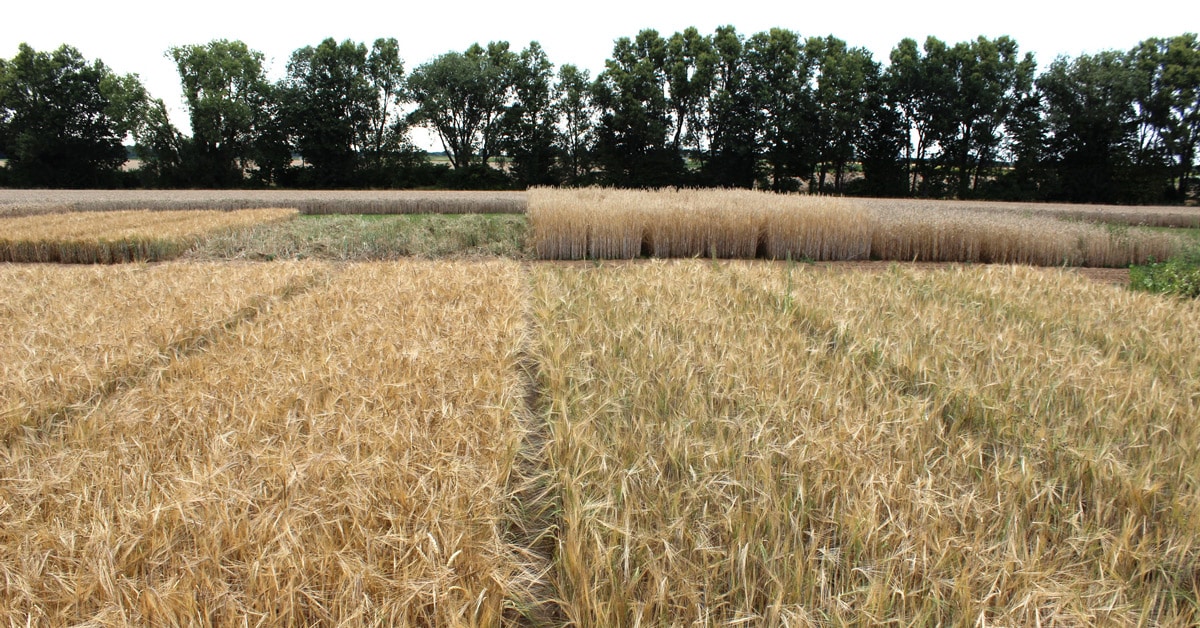
Oops, Science Was “Settled”—Until It Wasn’t: Plants Absorb 31% More CO₂ Than We Thought
by Charles Rotter | Oct 29, 2024
A new study reveals that plants have been absorbing 31% more CO₂ than previously believed. Yes, 31%—a glaring error that casts serious doubt on climate models, emissions scenarios, and policy prescriptions like Net Zero. For years, we were told that the “science was settled,” and that urgent action was needed to avoid catastrophic warming. But this discovery suggests that our models have been dramatically underestimating nature’s ability to manage CO₂. This revelation not only upends the rationale behind aggressive policies but also raises broader questions about the supposed certainty of climate science.
The Myth of “Settled Science”
The phrase “settled science” has been the bedrock of climate advocacy for decades. We’ve been told that if we don’t make rapid, costly changes, we’d face imminent disaster. Skeptics were treated as heretics, while the so-called consensus was portrayed as unquestionable. Yet, it turns out we were 31% wrong about something as fundamental as plant CO₂ absorption. This isn’t a minor correction; it’s a massive revision that undermines the credibility of models driving policy.
The Unraveling of Climate Models
Climate models are the tools used to predict warming and guide policy. They’ve been treated as scientific scripture, driving policies from emissions reductions to renewable energy mandates. But with a key assumption proven wrong, the models’ projections are called into question:
- Overblown Emissions Impact: Climate models predicted rapid CO₂ buildup, assuming limited natural absorption. This inflated the urgency of drastic emissions cuts. Correcting for higher CO₂ absorption rates means that CO₂ accumulates in the atmosphere slower than models predicted, weakening the case for urgent, economy-wrenching measures.
- Questionable Feedback Loops: Many models rely on dramatic feedback loops—such as reduced plant CO₂ absorption at higher temperatures—to justify emergency interventions. But this new data shows plants can handle more CO₂ than anticipated, making these feedback loops look less inevitable and more speculative.
- Policy Implications: If the models guiding climate policy have been this far off, then the entire framework behind policies like Net Zero becomes shaky. Policies driven by these models were never proven to be beneficial, but were only assumed to be so. The discovery that plants are absorbing significantly more CO₂ undermines the supposed need for extreme measures.
Integrated Assessment Models: Revisiting Flawed Assumptions
Integrated Assessment Models (IAMs) blend climate and economic data to suggest policies that balance costs and benefits. They have provided much of the justification for global measures ranging from carbon taxes to renewable subsidies. But with CO₂ absorption rates off by 31%, these models face a major credibility problem.
- Cost-Benefit Analysis Loses Its Basis: IAMs assume a certain rate of CO₂ absorption to weigh the costs of emissions cuts against the benefits. If the natural absorption is higher, then the benefits of aggressive cuts are lower than the models projected. In short, many of these “benefits” were assumed rather than demonstrated.
- Marginal Abatement Costs Are Likely Wrong: If plants are more effective carbon sinks, the cost of reducing each additional ton of CO₂ may be overstated in current models. This means that the high costs of immediate interventions may not be justified by the reduced warming they are supposed to achieve.
- Tech-Centric Solutions Become Harder to Justify: Expensive technological carbon capture schemes, often seen as a cornerstone of Net Zero strategies, become less urgent in light of nature’s greater CO₂ absorption capacity. Relying on natural processes might be more cost-effective, while prioritizing costly tech solutions could be a waste of resources.
The Net Zero Push: Unproven and Assumed to Be Beneficial
Net Zero policies are often presented as inherently beneficial, with no need to prove their value. The assumption is that reducing emissions rapidly will stabilize the climate and prevent catastrophic warming. But the reality is far less certain:
- Urgency Based on Unproven Models: The rush to Net Zero has been justified by models that assumed much lower natural CO₂ absorption. With plants taking in more CO₂, the urgency diminishes, raising questions about whether this policy was ever justified, beyond mere assumptions of benefit.
- Economic Costs Without Clear Benefits: The transition to Net Zero is projected to cost trillions, requiring massive infrastructure changes and energy system overhauls. These changes were sold as necessary to prevent dire outcomes, but with natural systems absorbing more CO₂, the supposed benefits become even murkier. The costs are real, while the benefits remain speculative.
- A Flawed Logic of Assumed Good: Proponents argue that even if Net Zero doesn’t deliver promised benefits, it’s better to “play it safe.” But this logic ignores the very real economic and social costs of these policies—costs that can harm the most vulnerable. If models were wrong about something as basic as CO₂ absorption, then continuing these extreme measures without re-evaluation is irresponsible at best.
Climate Sensitivity: Rethinking the Crisis Narrative
Climate sensitivity measures how much the Earth’s temperature will rise with a doubling of CO₂. It’s a core figure in climate models, typically estimated to be between 1.5°C and 4.5°C, with policy-driving models often assuming a midpoint of 3°C. If plant CO₂ absorption rates were so underestimated, it suggests that the models might also be overestimating climate sensitivity.
- Slower CO₂ Accumulation Reduces Sensitivity: If natural absorption is higher, the atmospheric CO₂ concentration increases more slowly, which may imply a lower climate sensitivity than currently assumed. In other words, less CO₂ means less immediate warming, contradicting the dire predictions that have justified extreme policies.
- Overestimated Warming Scenarios: The upper estimates of climate sensitivity have driven much of the urgency around climate action, but this new data suggests that the Earth may not warm as rapidly as claimed. If the worst-case scenarios are less likely, then the aggressive timelines for emissions reductions look increasingly unjustified.
- Time to Adapt, Not Panic: If climate sensitivity is indeed lower, it means we have more time to adapt to any changes, that may in fact be natural, rather than rush into drastic mitigation measures that haven’t been proven to work. Adaptation becomes a more reasonable and potentially effective strategy, given the new information on natural absorption rates.
The Bigger Picture: Science Isn’t Settled, and Neither Is Policy
The discovery that plants absorb 31% more CO₂ than we thought reveals just how far off the mark climate models—and the policies based on them—can be. It’s not just a matter of revising a few numbers; it’s about rethinking the entire narrative of “settled science.”
- Assumptions, Not Proof: Policies like Net Zero were based on assumptions of benefit, not evidence. They were sold as urgently needed to prevent catastrophe, but those catastrophic outcomes were based on models that got a core assumption wrong by nearly a third.
- More Surprises Await: If this key factor in the carbon cycle was so miscalculated, how many other natural systems might also be misunderstood? The real danger may not be climate change itself, but the overconfidence of those who claim to understand it fully.
- The Real Risk Is Bad Policy: Extreme measures based on flawed models can do more harm than good. If the costs of policies like Net Zero outweigh their uncertain benefits, then pushing ahead with them is reckless and potentially damaging.
Conclusion: Stop Assuming, Start Reassessing
The revelation that plants absorb 31% more CO₂ than previously estimated is a major blow to the models driving global climate policy. It challenges the core assumptions behind policies like Net Zero, which were never proven to be beneficial but only assumed to be so. If climate sensitivity is lower, warming slower, and natural CO₂ absorption higher, then the rush toward extreme measures looks increasingly unjustifiable.
It’s time for policymakers to recognize that the science is not “settled” and that uncertainty remains the defining feature of climate science. Instead of doubling down on unproven policies, it’s time to pause, reassess, and adapt to evolving evidence. Continuing the rush to Net Zero without a fundamental re-evaluation isn’t prudent; it’s a gamble with society’s resources and well-being.
Abstract
Terrestrial photosynthesis, or gross primary production (GPP), is the largest carbon flux in the biosphere, but its global magnitude and spatiotemporal dynamics remain uncertain1. The global annual mean GPP is historically thought to be around 120 PgC yr−1 (refs. 2,3,4,5,6), which is about 30–50 PgC yr−1 lower than GPP inferred from the oxygen-18 (18O) isotope7 and soil respiration8. This disparity is a source of uncertainty in predicting climate–carbon cycle feedbacks9,10. Here we infer GPP from carbonyl sulfide, an innovative tracer for CO2 diffusion from ambient air to leaf chloroplasts through stomata and mesophyll layers. We demonstrate that explicitly representing mesophyll diffusion is important for accurately quantifying the spatiotemporal dynamics of carbonyl sulfide uptake by plants. From the estimate of carbonyl sulfide uptake by plants, we infer a global contemporary GPP of 157 (±8.5) PgC yr−1, which is consistent with estimates from 18O (150–175 PgC yr−1) and soil respiration ( PgC yr−1), but with an improved confidence level. Our global GPP is higher than satellite optical observation-driven estimates (120–140 PgC yr–1) that are used for Earth system model benchmarking. This difference predominantly occurs in the pan-tropical rainforests and is corroborated by ground measurements11, suggesting a more productive tropics than satellite-based GPP products indicated. As GPP is a primary determinant of terrestrial carbon sinks and may shape climate trajectories9,10, our findings lay a physiological foundation on which the understanding and prediction of carbon–climate feedbacks can be advanced.






